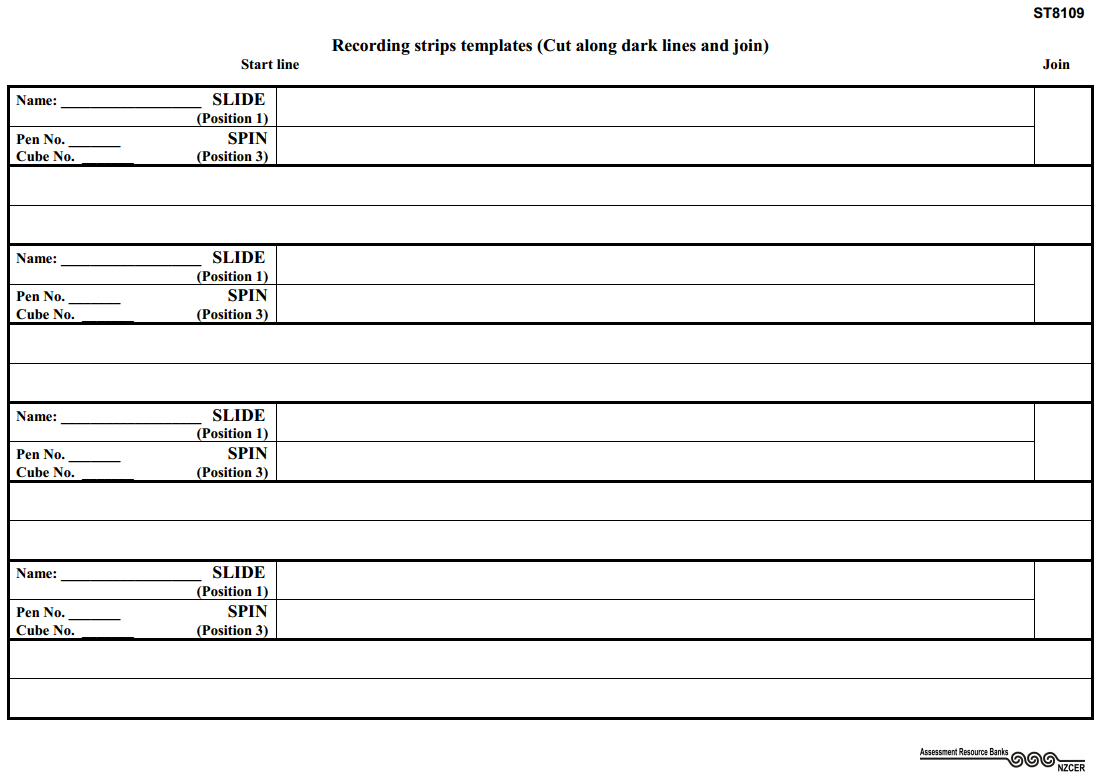Sliding, spinning, tumbling
Di wants to see how a cube will travel when she flicks it with her pen.

Predict if the cube will tumble, slide, or spin when flicked in different spots.
| a) | i) | Flicked in the centre (position 1) Tumble / Slide / Spin (circle one) |
| ii) |
Explain your choice
|
|
| b) | i) | Flicked in the centre (position 2) Tumble / Slide / Spin (circle one) |
| ii) |
Explain your choice:
|
|
| c) | i) | Flicked in the centre (position 3) Tumble / Slide / Spin (circle one) |
| ii) |
Explain your choice:
|
|
| d) | i) |
Which will travel further? (circle one)
(A) A cube flicked at the centre (position 1)
(B) A cube flicked at the left centre (position 3) (C) Both will travel about the same distance |
| ii) |
Explain your choice about which cube will travel furthest.
|
|
Plan
|
||
| e) |
What things must be done to conduct a fair test to decide whether a cube goes further spinning or sliding?
|
|
|
Data – Conduct an experiment
Test you predictions to c) by conducting an experiment.
The teacher will demonstrate how to do this and how to record your data on your recording strip.
|
||
| f) | i) |
Flick the cube in the centre (position 1). Mark the distance it goes on the upper line of your recording strip. Repeat this 20 times.
 |
| ii) |
Flick the cube in the left centre (position 3). Mark the distance it goes on the lower line of your recording strip. Repeat this 20 times.
 |
|
|
Interpret your graphs
|
||
|
g)
|
Compare the results on the two recording strips to make a conclusion about whether the cube goes further when it is sliding, or when it is spinning.
|
|
| i) |
Circle the response that best fits in this sentence:
My graph shows that a cube that is hit in position 1 usually travels _____________ than a cube hit in position 3.
further than / about the same distance as / not as far as (circle one)
|
|
| ii) |
Explain how you used the graphs to give you your answer to part i) above.
|
|
|
Pose other questions about flicking the cube
|
||
| h) |
What other things could you test by flicking your cube?
|
|







